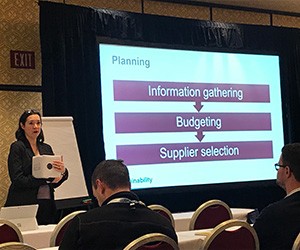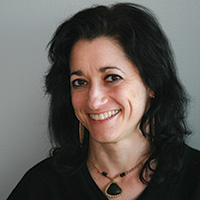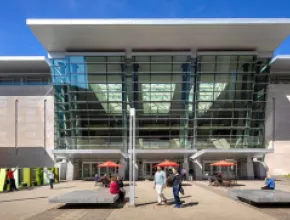In a Smart Monday session at IMEX 2018 named “Redesigning Inclusive and Welcoming Events by Overcoming Unconscious Bias,” presenters Mariela Mcilwraith, director, industry advancement, EIC and Tahira Endean, event producer, TahiraCreates. focused on ways planners can consider the perspectives and needs of potential participants to design events that are inclusive and accessible to all.
According to Endean, the goal for the interactive session was to understand that there is unconscious bias and how our perceptions affect our attitudes and behaviors toward individuals based on this.
“This includes how we listen (or not), respond to and are empathetic towards others, and when we are managing group situations and working to make many different types of people comfortable in our space we do need to increase our awareness of these,” she explained before the session.
“Then look at how our own perceptions affect the many ways we can make participants comfortable and how we can choose to be more empathetic,” Endean added.
During the session, participants shared personal experiences and ideas on how to make meeting spaces more comfortable for everyone—from quiet spaces to scent-free spaces, to spaces addressing mobility issues and accessibility, among others.
Creating Inclusive Meetings for Everyone
Much of the dialogue among participants focused on catering to attendees with disabilities. The presenters shared the statistic that about 15 percent of the world’s population lives with some form of disability of whom 2-4 percent experience significant difficulties in functioning.
Some suggestions were shared on how to prepare for attendees with disabilities, starting with the attendee registration process. One participant proposed going beyond simply asking whether attendees have mobility issues during registration and asking more specific questions such as, are you mobile enough to take one or two steps onto a motor coach or other form of transportation being used?
Another participant noted that planners should budget for accommodating attendees. In her example, she didn’t account for someone who was hearing impaired, which added $10k to the budget.
[Relevant Reading on the Meetings Today Blog:
- Accessibility, the ADA and Inclusion - It's Our Job!
- Why Diversity and Inclusion Matter to and for Our Industry]
A practical checklist included checking routes for users of wheelchairs or other mobility devices, checking accessibility of washroom facilities and elevators, seeing whether parking was in close proximity and whether parking areas were slip-resistant, checking for appropriate signage as well as evacuation plans. Details in preparation can include downloading disability access symbols for placement at an event and offering handouts in braille or large print for presentations.
For accommodation, planners can prepare by checking on accessibility of rooms, proximity of rooms to meeting space, whether check-in areas are accessible, whether staff has had proper training for attendees with disabilities and even whether there are “allergy friendly rooms.”
The more details the better. Mcilwraith suggested if planners are organizing a buffet, check if the property will have someone who can assist those with disabilities.
Mcilwraith said, “One event was going to have a lot of requirements and wasn’t going to work with the hotel’s accessibility, so they set aside certain disability rooms as shower rooms.”
Add These Items to Your Accessible Meetings Checklist
Service animals are another point of consideration. Determine whether there will be facilities and services available for them, local regulations on service animals and the nearest veterinarian.
The presenters also shared examples of what should be on hand for medical emergencies, including an automated external defibrillator, epi-pens and also to check for the nearest emergency facilities.
Other suggestions revolved around preparing for allergies and dietary issues.
“Some events eliminate the top eight allergens,” Mcilwraith said. She also noted that finger foods are high in allergens and said that planners need to be especially careful when arranging for those.
[Related Content: 5 Ways to Create More LGBTQ-Inclusive Events]
Inclusion issues can start right in the registration process with asking for a preferred pronoun, such as Ms. or Mr. If that information is necessary for planners, wording can be more general to be sensitive to the LGBTQ, such as “Your Preferred Pronoun.”
Diversity in speakers can also help attendees feel more welcome, and there was even a suggestion to educate speakers to describe what is on the screen for those with visual disabilities.
The session only had time to touch on the options for creating a more welcoming event.
“We have the opportunity to grow audiences by making programs more inclusive,” Endean emphasized. She continued, the best way to do that is plan events based on other people’s perspective.







